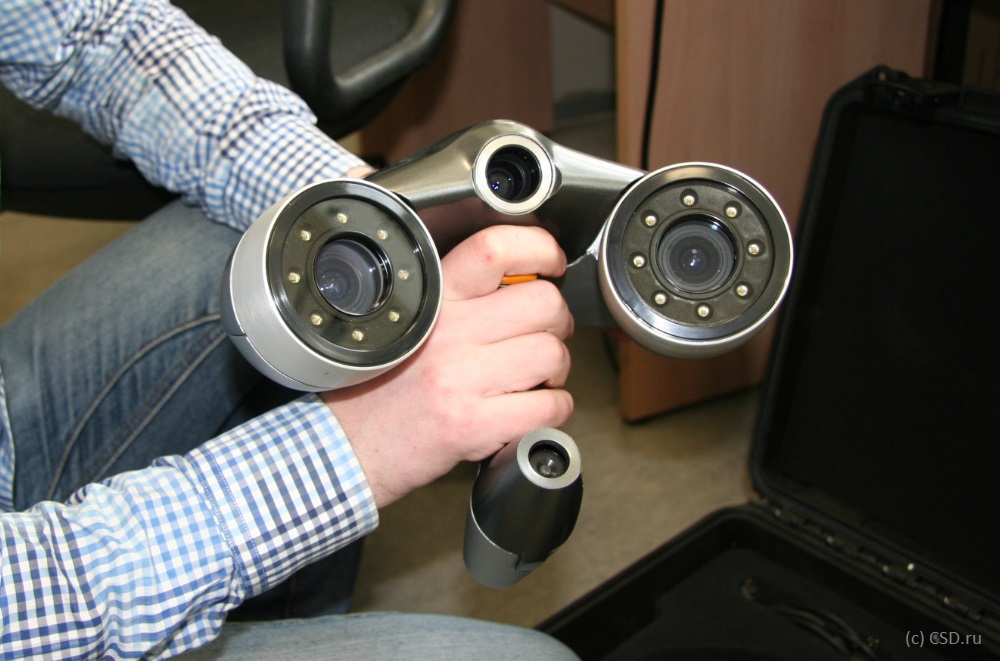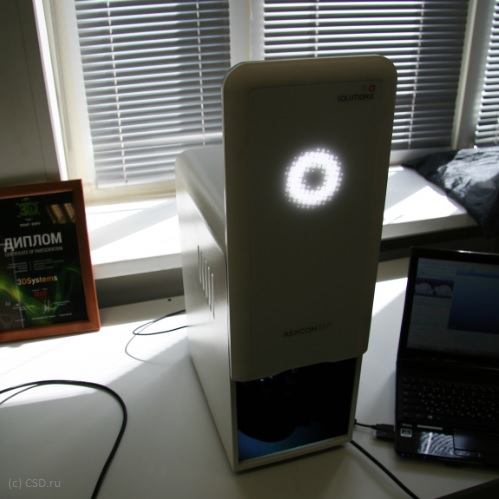Using a 3d scanner, I forged a key, held a skull, a heart and a gun in my hands

Hi Habr!
Once again I looked at the professionals in the field of 3d printing and 3d scanning.
“Do you have anything interesting?”
- That's what we have!
Manual
- Wow, what else?
High Precision Industrial Optical Scanner
I decided to test a stationary 3d-scanner, as the manual I 
“What do they mostly scan?”
- Teeth and jewelry. There is? Spread it out.
- Uh ... is it easier? Anything closer
- Well, you can scan the bent key, straighten it in the 3D editor, and then either print the casting mold or recreate it immediately on a metal 3d printer.
- OK, then you just show how the scanning and editing process is going on, and I know how the metal 3d printer works, and I already did the mold for the casting.

(Caution, a lot of photos)
TTX scanner
Scanning method - Phase shifting optical triangulation
Number of cameras - 2
Scanning volume - 80x60x60 mm
Camera resolution - 1.4 MP
Accuracy ± 0.01 mm
Output data format - STL
google the price

Scan technology
Patent “Phase shifting optical triangulation”
en.wikipedia.org/wiki/Structured_light
en.wikipedia.org/wiki/Structured-light_3D_scanner

The principle of creating a 3D image of a surface from an interference image used in 3D scanners with structured light.
Scanning process

The key is mounted on the platform, thanks to a special “chewing gum”.

The key is too shiny. First, it must be covered with a matte film.
Talcum spray

We place it in the camera for scanning, where it will be twisted, rotated and photographed. The

scanned object can move along two axes (oscillation and rotation).



Video of the scanning process.
Scanning takes about 10 minutes, and in parallel the 3d model appears in the

Processing program in the 3d editor.


They removed the platform (but the “chewing gum” remained)

A more serious editor. Allows grouping areas. We clean the model from the “chewing gum”.

Almost ready for modification 3d-model.

While the specialist was processing the model in a 3D editor, I looked around and found something interesting
What have I noticed yet

Printing on the basis of light-cured acrylate, one of the most accurate

unassembled Liberator technologies

in assembled form Liberator (75% of the original size)


striking detail (tree height 2 cm)
Layout of the city of

Gypsum
Tire for the treatment of hand injuries


They say that it is much more convenient than the classic devices, because that light and personalized
Skull 1

model was used in a real neurosurgical operation

Skull 2

3d models are created on the basis of X-ray images

Heart1

Heart2

It’s not at all like in school anatomy textbooks
Teeth

Dentist The use of 3D printers and 3D scanners is constantly increasing.
Micro

3D printers for metal can work with incredible detail

"See you soon"
P.S.
Thanks to all the employees of the company for patiently answering all my questions and taking the time to share my experience of using cool modern devices.
Only registered users can participate in the survey. Please come in.
What other equipment would you like to get to know?
- 39.5% 3d hand scanners 240
- 32.2% stationary 3D scanners 196
- 39.7% stereolithographic 3D printers 241
- 33.7% Wax 205 3D Printers
- 85.1% metal 3D printing printers 517
